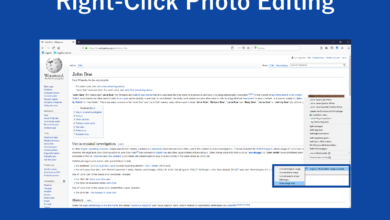How to Align Company Goals With Business Development Efforts

In the dynamic world of business, aligning company goals with business development efforts emerges as a critical success factor. This ensures that every facet of the organization marches toward a common purpose, fostering cohesion and efficiency. When these aspirations and strategies sync, businesses navigate market complexities with increased agility, respond to shifts proactively, and secure a competitive edge. Grasping this alignment’s significance can substantially enhance a company’s growth and sustainability.
Aligning company goals with business development efforts yields numerous advantages. First, it streamlines operations by ensuring all departments and teams pursue the same objectives which reduces redundancy and boosts productivity. Second, it enhances resource utilization by funneling efforts and investments into strategically critical areas, maximizing returns. Finally, this alignment promotes a culture of collaboration and innovation. When employees understand their roles’ impact on company objectives at every level, they drive toward sustainable growth, increasing profitability and solidifying the market position.
This article aims to empower businesses by equipping them with the knowledge and tools essential for aligning their goals with business development efforts, thereby paving the way for sustained success.
Conducting a Thorough Assessment
The first crucial step towards effectively aligning company goals with business development efforts entails conducting a thorough assessment. Companies must deeply scrutinize their current objectives to grasp their relevance and feasibility and, most importantly, how these align with the long-term vision. This evaluation pinpoints potential gaps and misalignments that may thwart progress. By meticulously examining current goals, businesses ensure they remain ambitious yet realistic and achievable within the established timeline.
The subsequent phase of the assessment entails a meticulous examination of present business expansion plans. Analyzing prevailing strategies, processes, and undertakings that bolster growth and understanding successful historical tactics becomes invaluable in illuminating aspects ripe for enhancement. For instance, using website analytics tools to identify popular site pages and analyze website performance can help companies understand which areas of their online presence are aligned with business expansion goals, and where adjustments may be necessary.
The review must evaluate market trends, assess the competitive landscape, and interpret customer feedback, ensuring that business development efforts align with external factors.
Merging the evaluation of current objectives and business development reviews offers a comprehensive perspective on corporate strategy. This detailed analysis empowers companies to make savvy adjustments in aligning goals with growth tactics which can propel them toward unified ends.
Setting Clear and Measurable Objectives
After completing the assessment, set clear and measurable objectives by adopting the SMART framework. These provide a roadmap outlining necessary accomplishments, measurement metrics for success, and timelines for goal attainment. This clarity fosters focus and directs all efforts toward achieving set objectives.
Effective communication strategies play a crucial role in this process. Clearly articulating the goals and their underlying rationale to all stakeholders guarantees unity of purpose. Moreover, it demands consistent updates and open dialogue regarding progress and challenges encountered. Understanding the bigger picture and their role in achieving goals, employees become more motivated and committed to the cause. To further boost employee motivation and dedication, consider offering them affordable gifts for employees, like virtual gift cards or company swag. This approach promotes a positive work culture and creates a clear connection between employee effort and organizational success.
Additionally, setting clear and measurable objectives enables better tracking and evaluation of progress. It offers a benchmark for measuring performance, streamlining the identification of underperforming areas that require further focus. This proactive approach ensures prompt rectification of any deviations from the plan, maintaining the company’s trajectory toward its goals.
Investing in Professional Development
Investing in professional development constitutes a key strategy for aligning company goals with business development. Training programs are an essential part of this investment; by equipping employees with the necessary skills and knowledge, companies ensure that their workforce meets the challenges of the business environment. Training programs must specifically cater to the company and its employees’ unique needs, targeting areas that promise significant impact.
For example, one emerging area of professional development in tech-driven industries is education in blockchain technology and blockchain interoperability. As industries increasingly adopt decentralized systems, understanding blockchain fundamentals becomes vital for staying competitive. Introducing training on the Inter-Blockchain Communication (IBC) protocol and offering IBC technical resources can further empower employees to explore how secure and seamless data transfer across different blockchain networks streamlines operations and creates opportunities for innovation. This knowledge equips teams to identify opportunities where blockchain solutions can enhance business processes, improve transparency, and drive growth.
Investing in professional development fosters a culture of continuous learning and improvement. When employees perceive the company’s commitment to their growth, they engage more avidly and remain motivated. This engagement proves critical for aligning business goals with developmental efforts, ensuring that employees actively contribute to realizing the company’s objectives.
Encouraging Collaboration and Communication
Another vital strategy for aligning company goals with business development involves encouraging collaboration and communication. Regular meetings and updates are essential in keeping everyone informed and engaged. They also provide a platform where team members can share ideas and feedback, thereby fostering a culture of continuous improvement.
Cross-functional teams drive innovation and solve complex problems by leveraging diverse perspectives. Such collaboration ensures that decisions reflect all business aspects, leading to more holistic and effective strategies.
Effective collaboration and communication foster ownership and accountability among employees. When team members value their contributions as part of a collective effort, they commit to their roles. This commitment propels them toward common goals—keys to aligning company objectives with business development initiatives.
Establishing Accountability and Monitoring Progress
Accountability establishment and progress monitoring constitute critical elements in the alignment of company goals with business development. Companies, by defining key performance indicators, can objectively measure their advancement towards these objectives. These metrics offer a transparent, quantifiable method to monitor performance. They simplify the process of distinguishing high-performing areas from those requiring enhancement.
Regular feedback sessions offer employees the chance to engage in open and honest two-way dialogue with managers. In fact, 75% of employees who receive feedback agree that it is critical to their work. During these exchanges, they receive constructive criticism as well as recognition for their efforts. This approach promptly addresses issues and aligns everyone with the company’s objectives, ensuring a cohesive pursuit of goals.
Monitoring progress and establishing accountability necessitate the creation of consistent review protocols. These assessments empower companies to adjust their strategies as needed, thereby maintaining alignment with their objectives. This proactive approach helps with maintaining momentum and driving continuous improvement.
Bottom Line
Businesses must proactively align their goals with business development efforts. This requires conducting in-depth evaluations of existing objectives and corresponding activities, setting precise, quantifiable targets, and promoting a culture steeped in collaboration and communication.
Establishing accountability and vigilantly tracking progress is critical to maintaining the alignment’s trajectory. Investing in professional development further enhances team skills and knowledge. This proactive approach propels the organization towards its objectives.
Such initiatives allow businesses to unlock their full potential, achieving greater success and sustainability amid fierce competition. Now is the pivotal moment for organizations to align goals with business development efforts, thus paving the path toward a brighter, more prosperous future.




